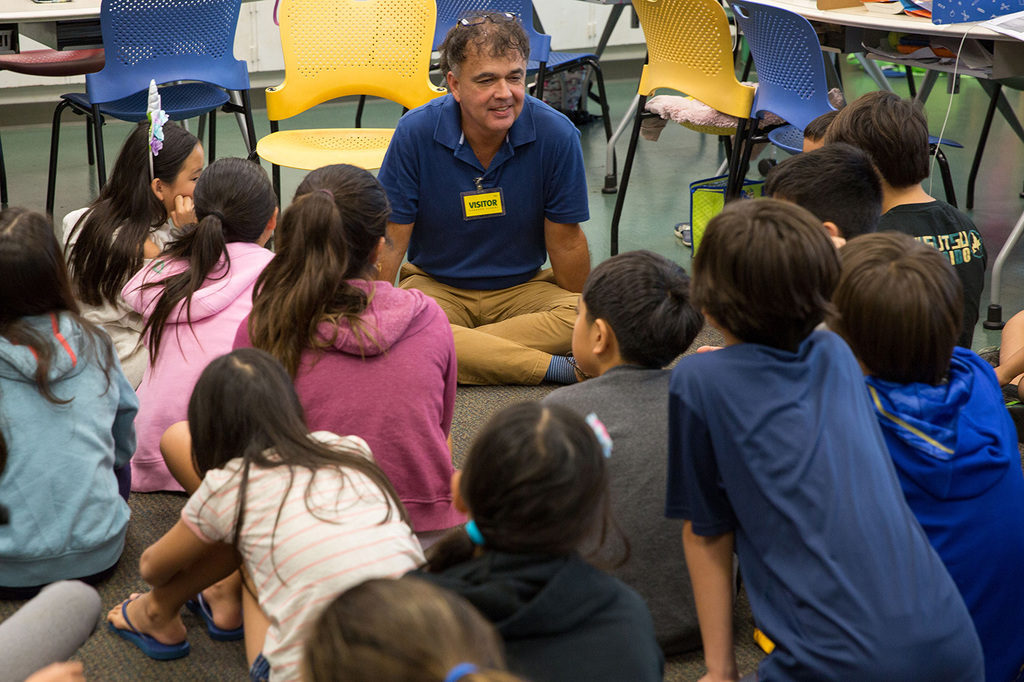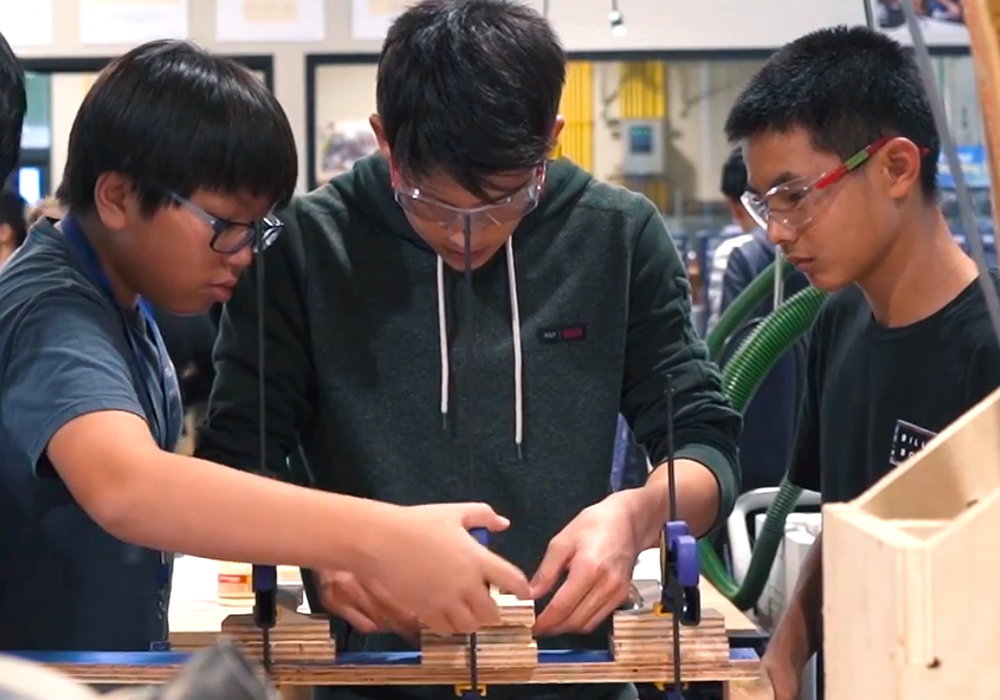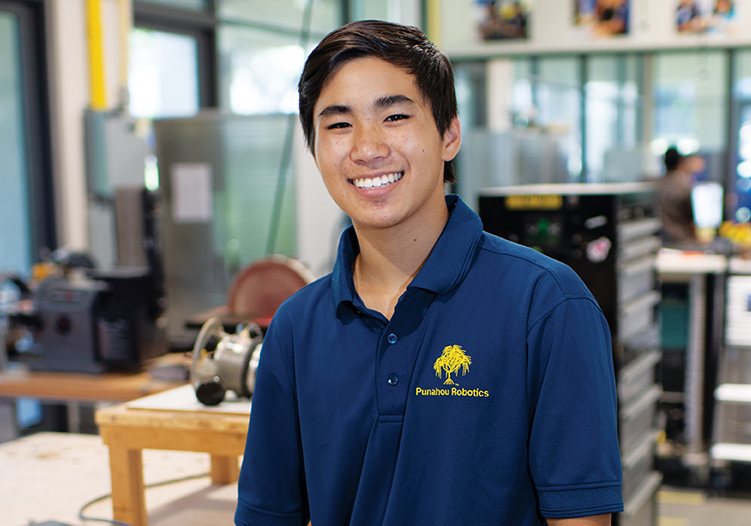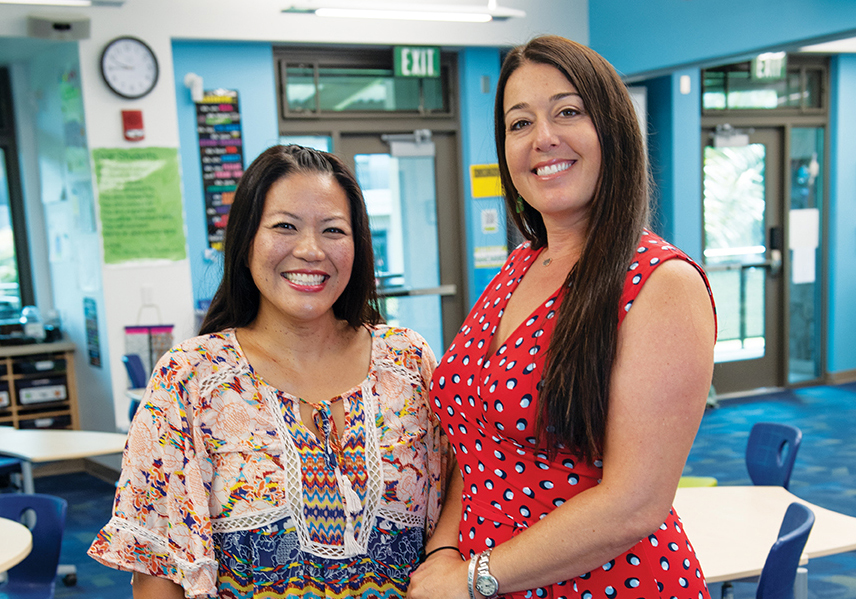
Shift+ Furniture designer David Stubbs and his team paid a recent visit to Punahou to take an inventory of furniture and storage needs in preparation for the opening of the second half of the Sidney and Minnie Kosasa Community for Grades 2 – 5 in fall 2019. Stubbs is a former school administrator turned architect turned furniture designer who brings a keen eye into classrooms to assess the needs of our little ones.
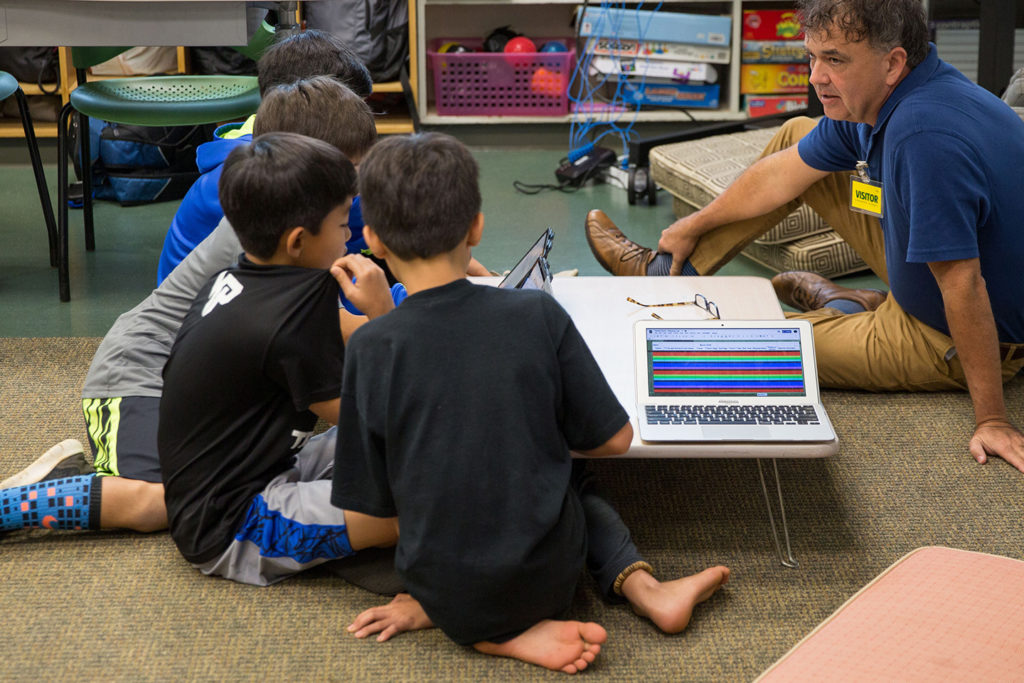
It’s easy to take a desk or a chair for granted, but actually furniture design plays an influential role in how students learn. For example, furniture can facilitate or inhibit collaboration. “Kids work in really close proximity when they collaborate because that is how they best communicate with each other,” said Susan Stubbs, David’s wife and co-founder of their company, Cultural-Shift. Children naturally gravitate to the 90-degree angles in tables so they can be side-by-side and still see each other.
Even more important, furniture design can allow children to take control of their own learning, giving them the confidence to set themselves up for how they learn best. “Flexible furnishing and storage gives students and teachers a choice of spaces depending on the task,” Susan explained. That’s why Shift+ furniture is designed with reconfiguration in mind. With many fixtures on wheels, both adults and children can easily rearrange an entire room.
David, along with Susan and furniture and storage reps David Chang ’92 and Judy Barnhart ’70, did a complete walk through of all 2 – 5 classrooms, including the ones currently housed in Castle Hall.
Once inside, the team made observations of how students were interacting with their physical environment. Are the chairs the proper size? Can students sit with their feet on the floor? Are tables restricting movement or facilitating collaboration? Do students have a diversity of heights they can work at, from lying on the floor to standing? How are teachers using storage spaces?
David joined one class on the floor to ask students what their preferences are for their physical learning environment. “How many of you like having different chairs to choose from?” At that, every hand shot up. David also asked about storage and then offered that having storage dispersed allows students to move around the room. “It’s good for blood flow, which makes you alert,” he said.
David and the team also met with teachers from each grade level to hear feedback, and gave some of his own: “To other people it might look chaotic to see the room configured in all these different ways, but I understand it and see what’s going on. It represents a shift from teachers taking the traditional spot at the front of classroom to allowing kids to take control. It’s not a recipe, it’s about who you are and how you like to teach, and you teachers have done amazing work.”
